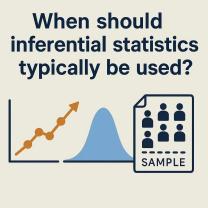Which is best way for learning web design?
Learning web design involves a combination of theoretical knowledge, practical skills, and continuous practice. Here's an optimal approach to learning web design:
Understand the Basics:
- Start with HTML and CSS: These are the fundamental building blocks of web design. Understand the structure and presentation of web pages.
- Learn Responsive Design: Understand how to create websites that work seamlessly across various devices and screen sizes.
Use Online Resources:
- Online Courses: Platforms like Codecademy, Udemy, and Coursera offer comprehensive web design courses.
- Documentation: Refer to official documentation for HTML, CSS, and other relevant technologies. MDN Web Docs is an excellent resource.
Practice Regularly:
- Hands-on Projects: Apply your knowledge by working on small projects. Start with simple websites and gradually increase complexity.
- GitHub: Contribute to open-source projects or start your own repository to showcase your work.
Learn Responsive Design:
- Master CSS Media Queries: Understand how to make your designs responsive and adaptable to different devices.
- Mobile-First Approach: Design websites with mobile devices in mind first, then scale up for larger screens.
Explore Design Principles:
- UI/UX Principles: Learn about user interface (UI) and user experience (UX) design principles. Understand how to create visually appealing and user-friendly websites.
- Color Theory and Typography: Understand the impact of color and typography on web design.
Familiarize Yourself with Design Tools:
- Adobe XD, Figma, Sketch: Learn how to use design tools for creating mockups and prototypes.
- Version Control: Understand version control systems like Git for collaboration and project management.
Stay Updated:
- Follow Industry Trends: Web design evolves, so stay informed about the latest trends and technologies.
- Blogs and Forums: Follow web design blogs, participate in forums, and engage with the community to stay current.
Build a Portfolio:
- Showcase your best work in a portfolio. This is crucial for getting hired or freelancing opportunities.
- Include a variety of projects to demonstrate your range of skills.
Networking and Collaboration:
- Connect with other learners and professionals through social media, forums, and local meetups.
- Collaborate on projects to gain practical experience and learn from others.
Seek Feedback:
- Share your work with peers, mentors, or online communities to receive constructive feedback. Use it to improve and refine your skills.
Remember that learning web design is an ongoing process, and staying curious and adaptable is key to success. Keep practicing, building, and refining your skills as you progress.
What are the most effective methods for learning web design?
Mastering web design involves both technical skills and creative flair, so the most effective learning methods will combine both hands-on practice and theoretical knowledge. Here are some top approaches:
Building a Solid Foundation:
- Learn the language: Start with the core languages of web design - HTML, CSS, and JavaScript. Free online resources like Codecademy, FreeCodeCamp, and Khan Academy offer interactive tutorials and projects. Books like "Head First HTML & CSS" and "Eloquent JavaScript" are also great resources.
- Grasp design principles: Understand fundamentals like visual hierarchy, typography, color theory, and layout composition. Online courses like Google's "Fundamentals of Web Design" on Coursera, books like "Don't Make Me Think" by Steve Krug, and websites like A List Apart can be immensely helpful.
Hands-on Practice and Application:
- Project-based learning: The best way to solidify your knowledge is by building websites. Start with small projects like personal portfolios or landing pages, then gradually work your way up to more complex designs. Platforms like CodePen and JSFiddle are great for experimenting with code snippets.
- Clone existing websites: Choose websites you admire and try to recreate them. This will help you understand how different design elements come together and hone your coding skills.
- Participate in design challenges: Websites like Dribbble and Behance host regular design challenges, offering prompts and a community to share your work and receive feedback.
Stay in the Loop and Enhance Your Skills:
- Follow industry trends: Read design blogs, watch YouTube tutorials, and attend online conferences to stay updated on the latest trends and technologies. Resources like Smashing Magazine, Webflow University, and Awwwards offer valuable insights.
- Connect with other designers: Join online communities like design forums and Slack groups to connect with other designers, ask questions, and share your work.
- Contribute to open-source projects: Contributing to open-source web design projects is a great way to gain practical experience, learn from experienced developers, and build your portfolio.
Remember:
- Be patient and persistent: Learning web design takes time and dedication. Don't get discouraged if you don't see results immediately. Keep practicing, experimenting, and learning.
- Find your learning style: Some people prefer structured courses, while others learn best through hands-on projects or visual resources. Experiment with different methods to find what works best for you.
- Have fun! Web design should be enjoyable. Choose projects that you're passionate about and experiment with different styles and techniques.
By combining these methods and tailoring them to your learning style and goals, you can effectively master web design and build a successful career in this exciting field.













